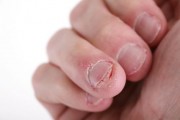Helping children face their fears may be more productive than focusing on other techniques to help them manage their anxieties, according to research presented at the annual meeting of the American Academy of Child and Adolescent Psychiatry in Chicago.
The research, which identified similarities between cognitive behavioral therapy administered in a clinical practice and protocols recommended in common treatment manuals, showed that as children were taught to face their fears, their ability to function increased.
The study also showed that children were able to complete exercises exposing them to their fears much earlier than suggested in the treatment manuals. The more children focused on other techniques for managing their anxieties, however, the less improvement they showed in functioning.
Stephen Whiteside, Ph.D., from Mayo Clinic in Rochester, Minn., explained that more research into treatment options for childhood anxiety needs to be conducted. “We have children face their fears and we teach them techniques for managing their anxiety, but research isn’t advanced enough to show which element should be the main part of treatment or whether both parts are necessary for improvement,” he says.
Dr. Whiteside also says that treatment manuals suggest introducing exposure — having children face their fears — late in the treatment process. “We wondered whether we could begin exposures closer to the beginning of the process,” Dr. Whiteside says. “If we focused on exposures and didn’t provide anxiety management techniques, would kids still get better?”
According to Dr. Whiteside, treatment that was shorter and began exposures earlier than standard manuals recommended not only improved the children’s ability to function but also could to be more cost-effective.
Source: Mayo Clinic

